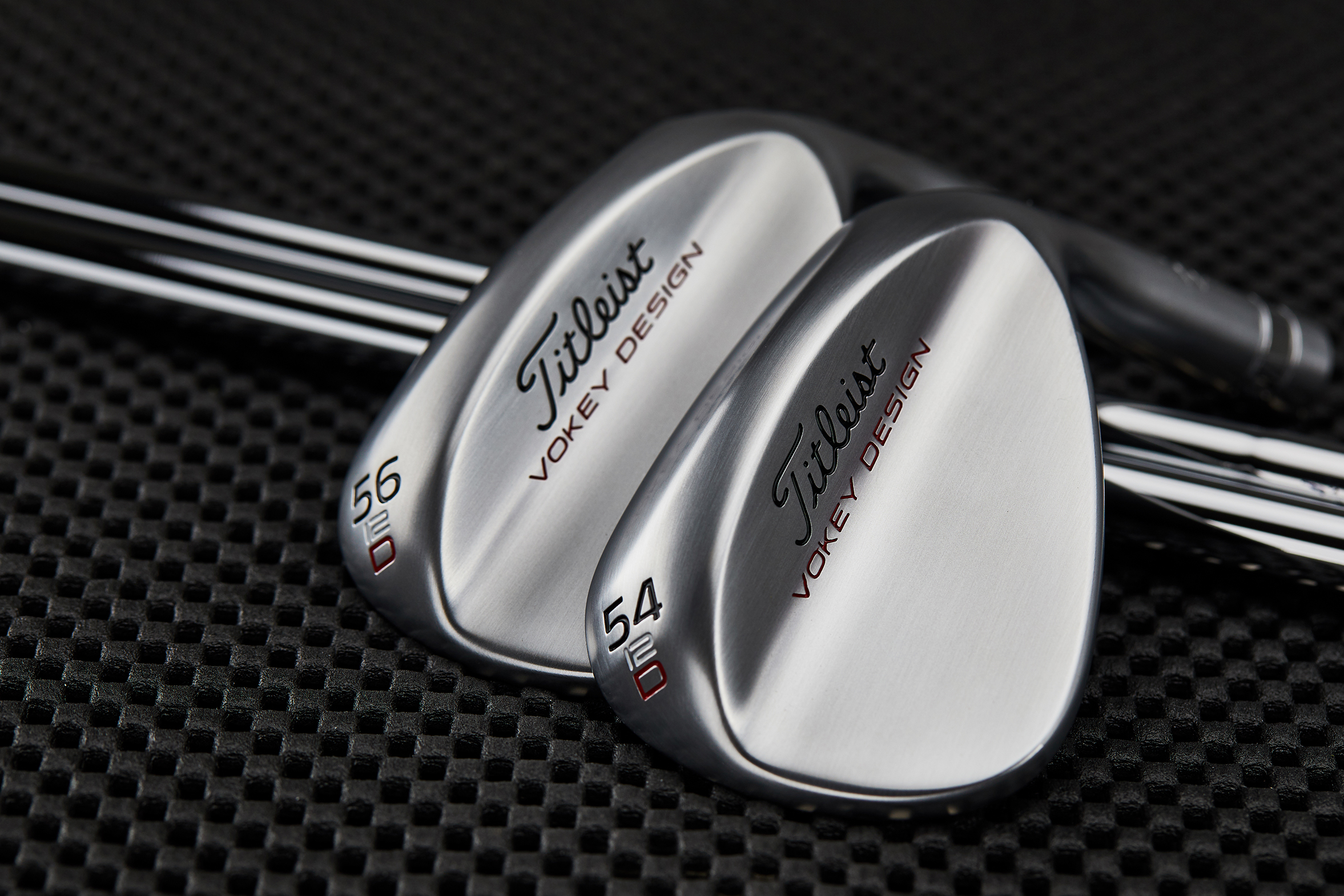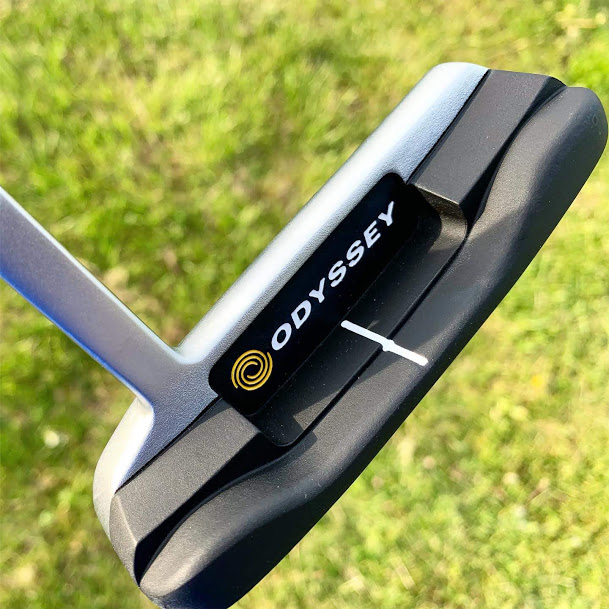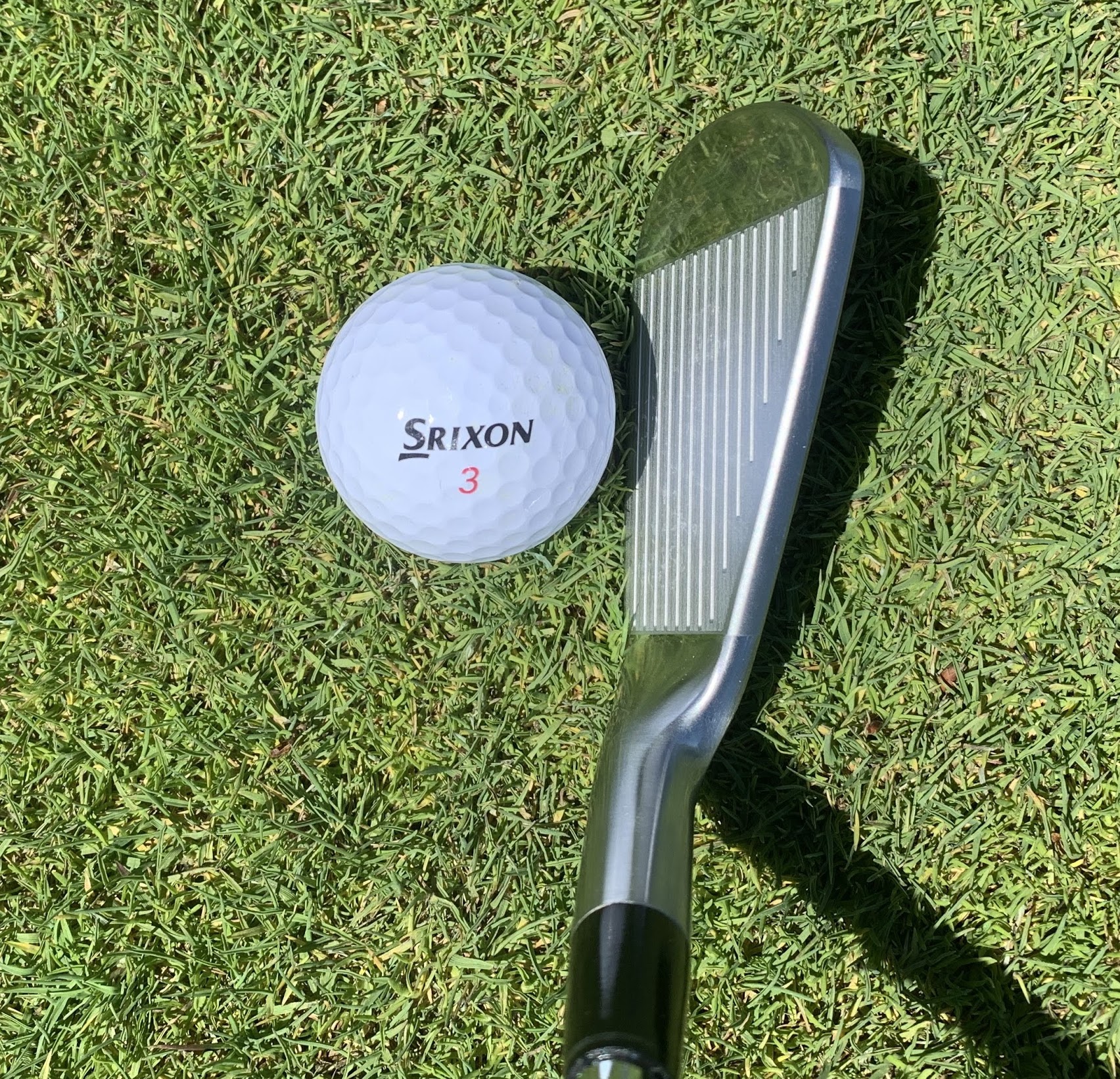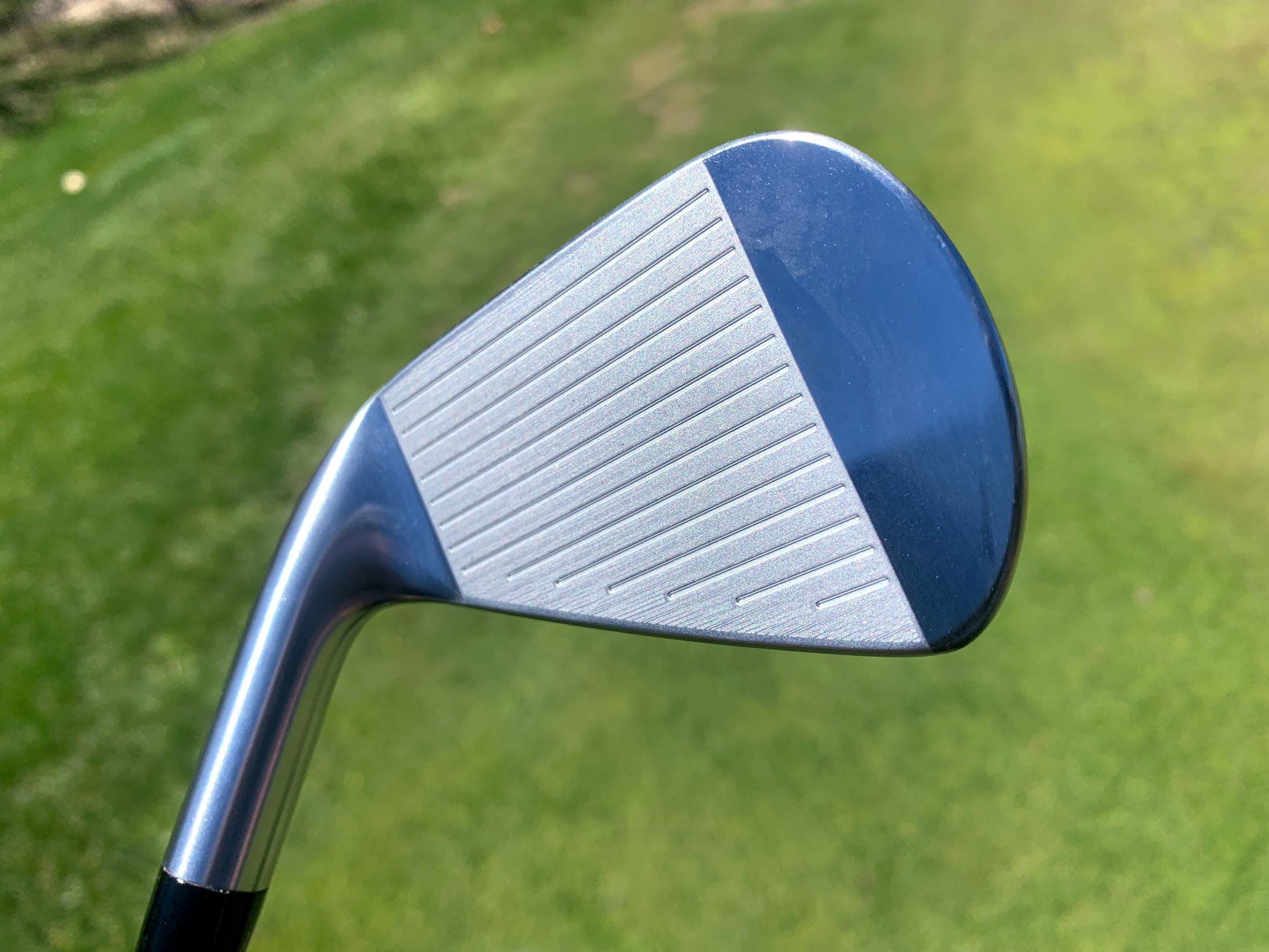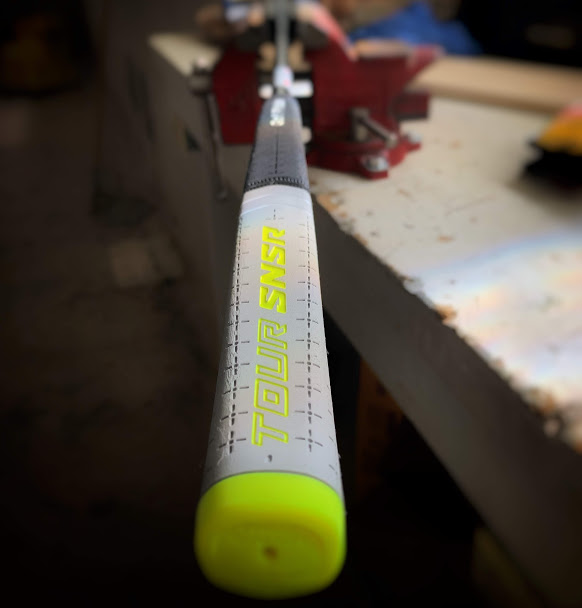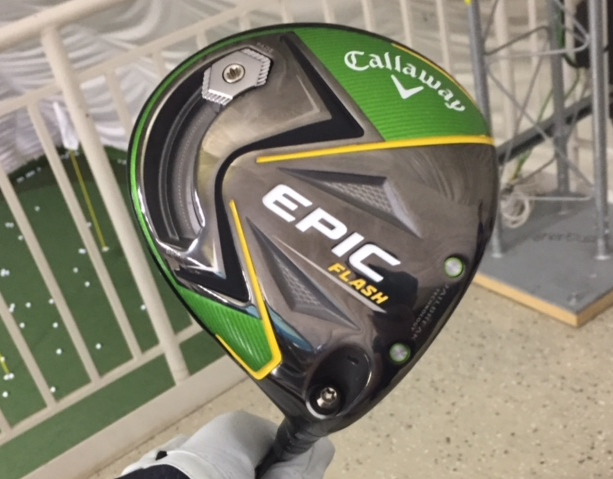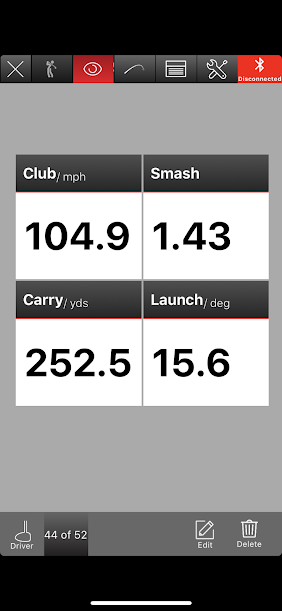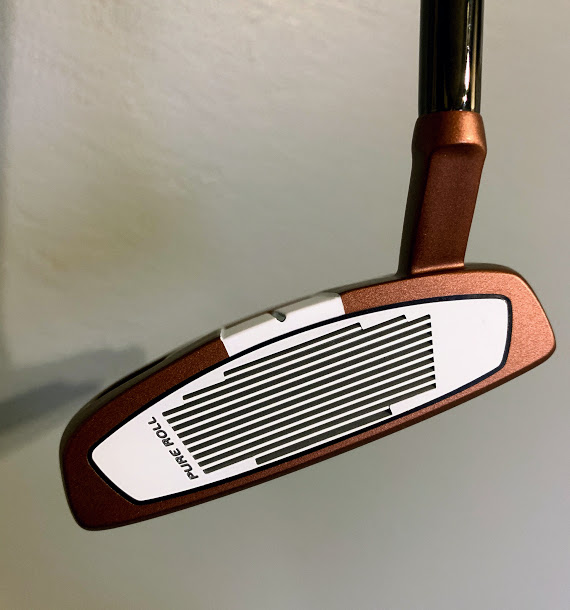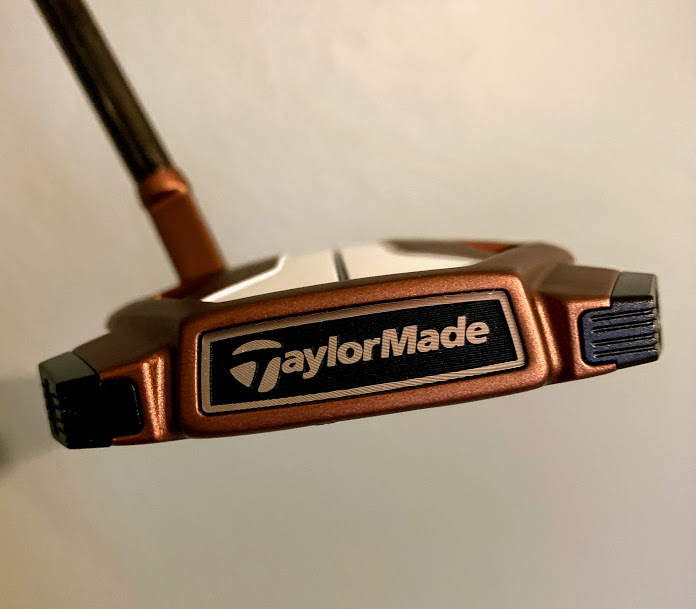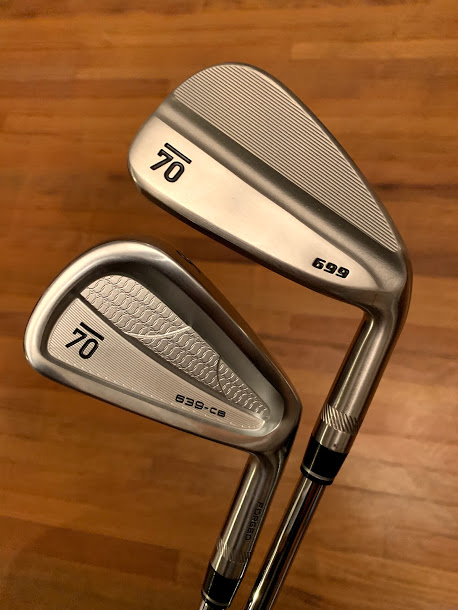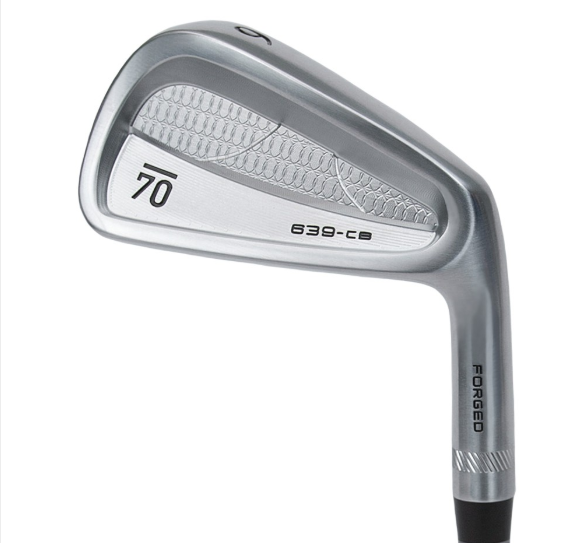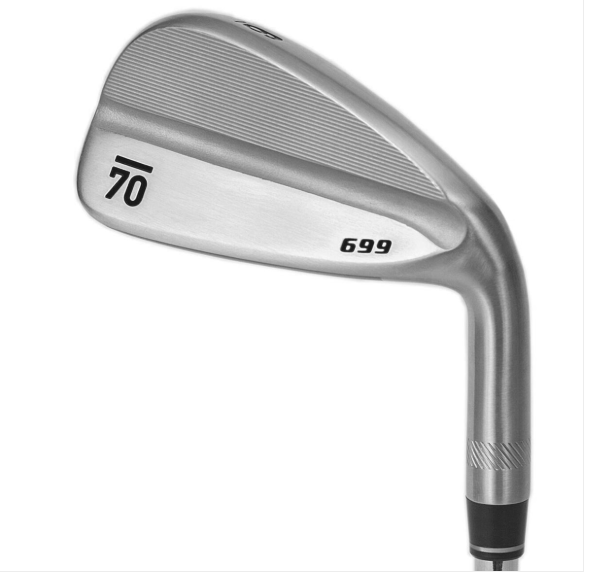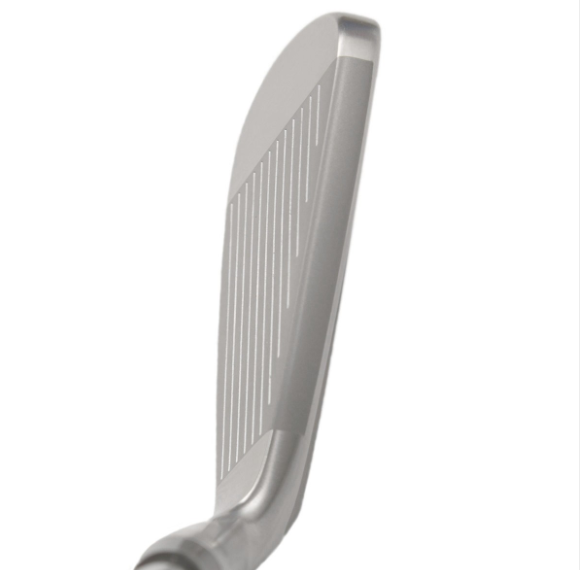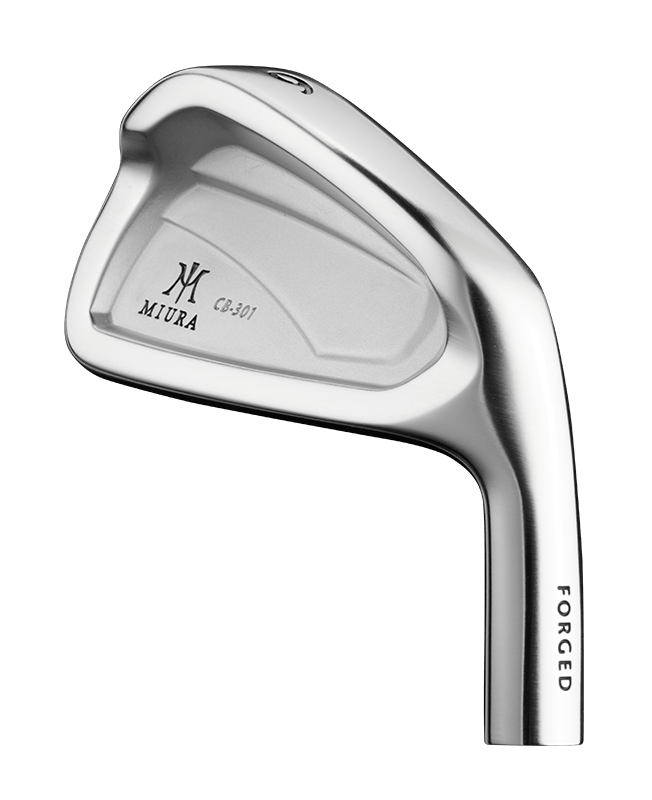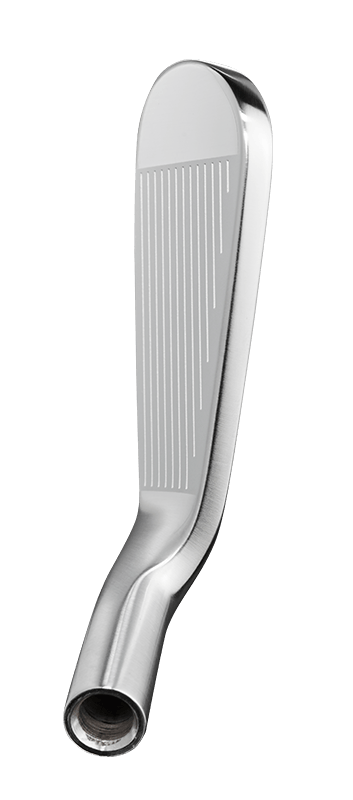New Titleist Vokey D Grind Wedges Introduced
The new Titleist Vokey D Grind wedges offer a familiar bounce shape for shot versatility for the skilled player. Read our first look here.
Titleist follows up yesterday’s news of two new driver releases — the TS1 and TS4 — with today’s unveiling of a new wedge grind option in their popular Vokey series: the D Grind.
Billed as a “player’s high bounce wedge”, the Vokey D Grind is a follow up to last year’s SM7 D grind option and features the same crescent shape of Vokey’s popular M Grind wedges. Master craftsman Bob Vokey is doubling down on his philosophy that players should have a high bounce sand wedge and low bounce lob for optimal shot versatility in your lowest scoring clubs.
“During most of my fittings, I’m striving to fit the player into two different grinds. We always fit based on how the player uses their wedges, but my preference is notably a high bounce sand wedge and mid-to-low bounce lob wedge, so they have the versatility to face all different types of shots and conditions,” Vokey said. “Bringing the D Grind to the 54 and 56 degree models opens up a great new fitting opportunity in these sand wedge lofts.”
The higher bounce portion of the grind shape is introduced when addressing the ball square, and the lower, tighter bounce can be used when opening the face of the wedge. This basically gives you three or more wedges in one design, unlocking an array of shot options for skilled players. Of course, the new D Grind wedges have been tested extensively on TOUR already and are receiving high praise among the Titleist faithful.
Each Titleist Vokey D Grind wedge will start at $195. For more information, be sure to visit their product page here.
Up Close with the TaylorMade Golf GAPR
Watch our Up Close video summary of the TaylorMade GAPR utility club here.
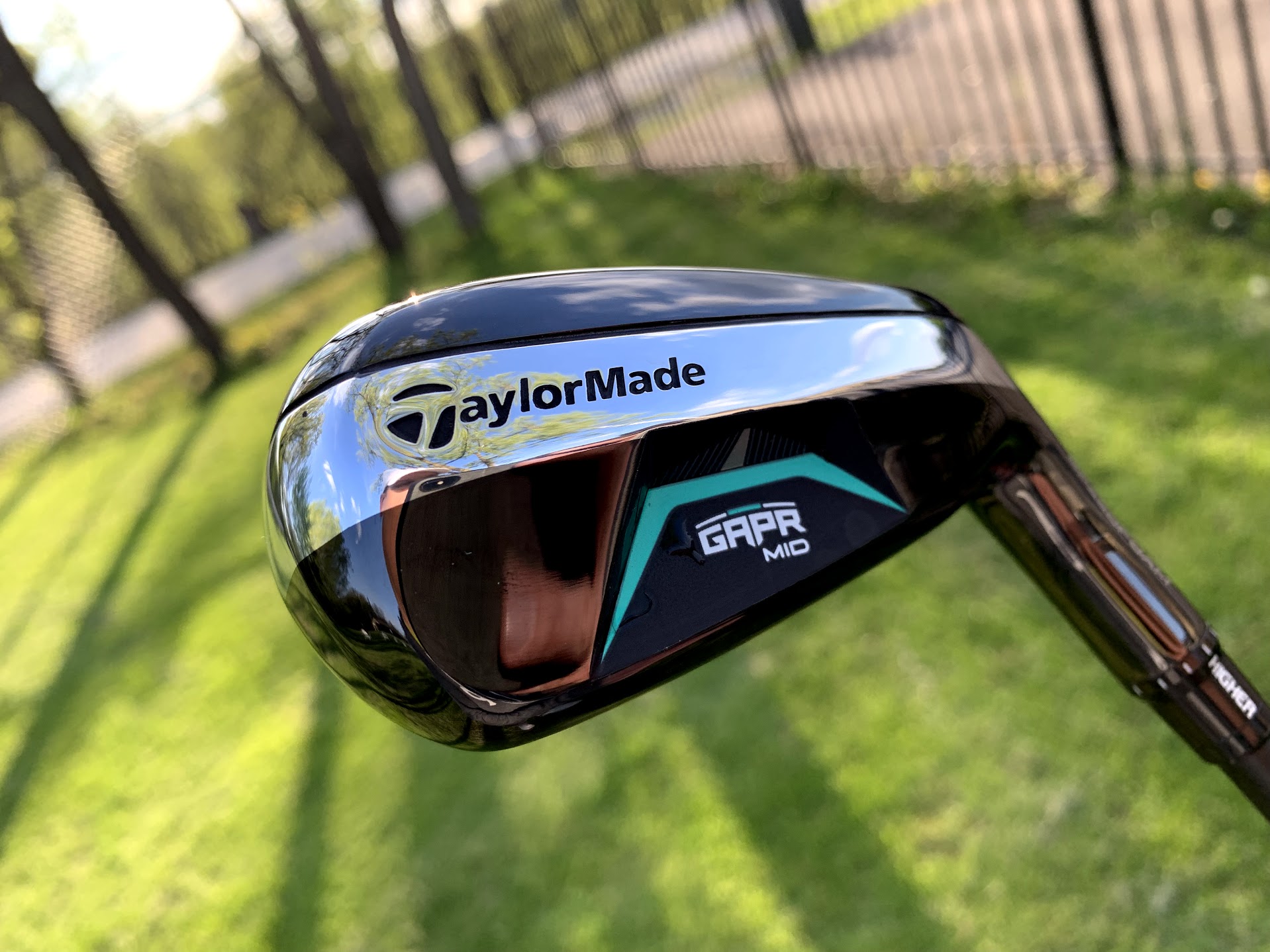
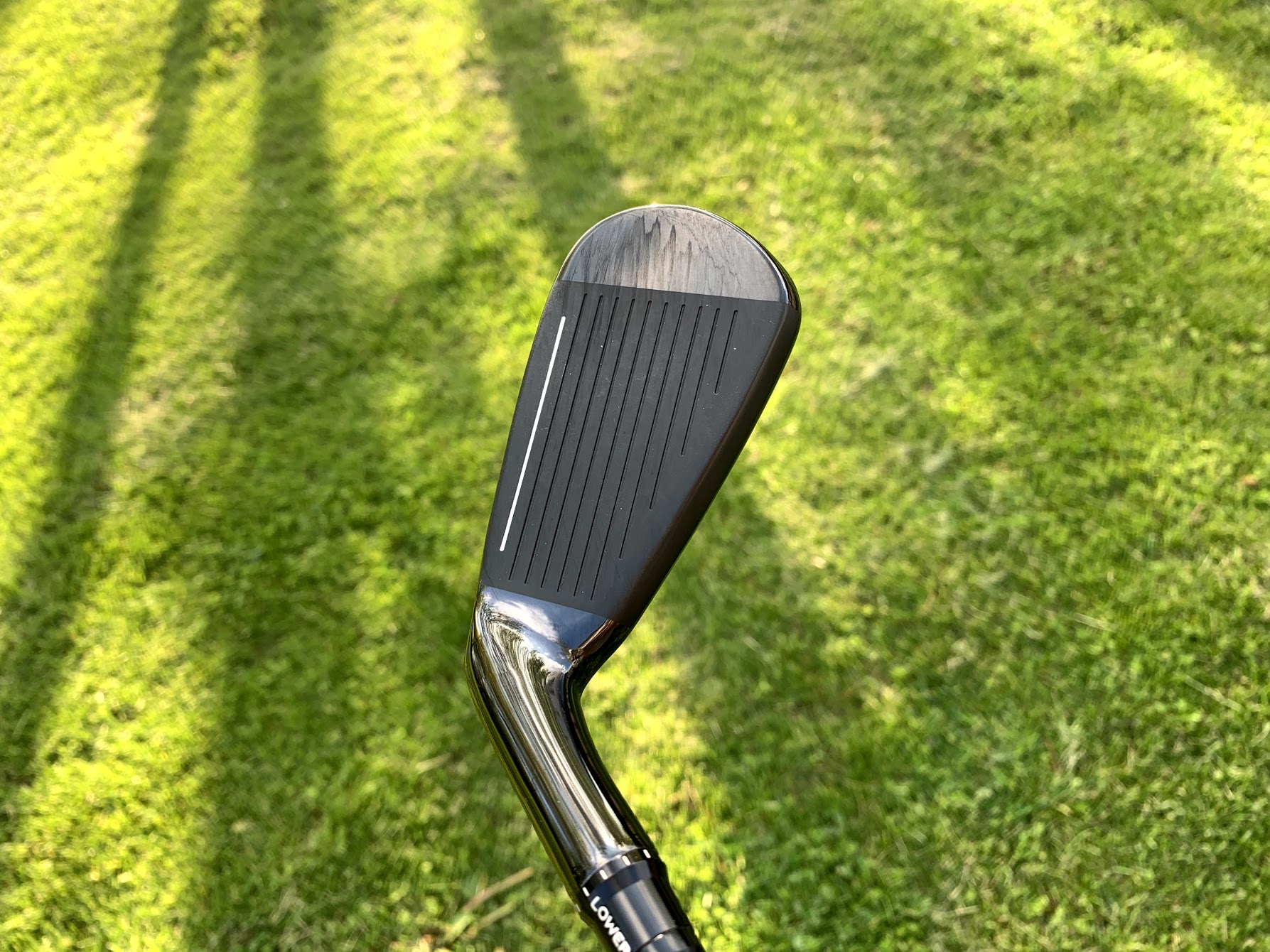
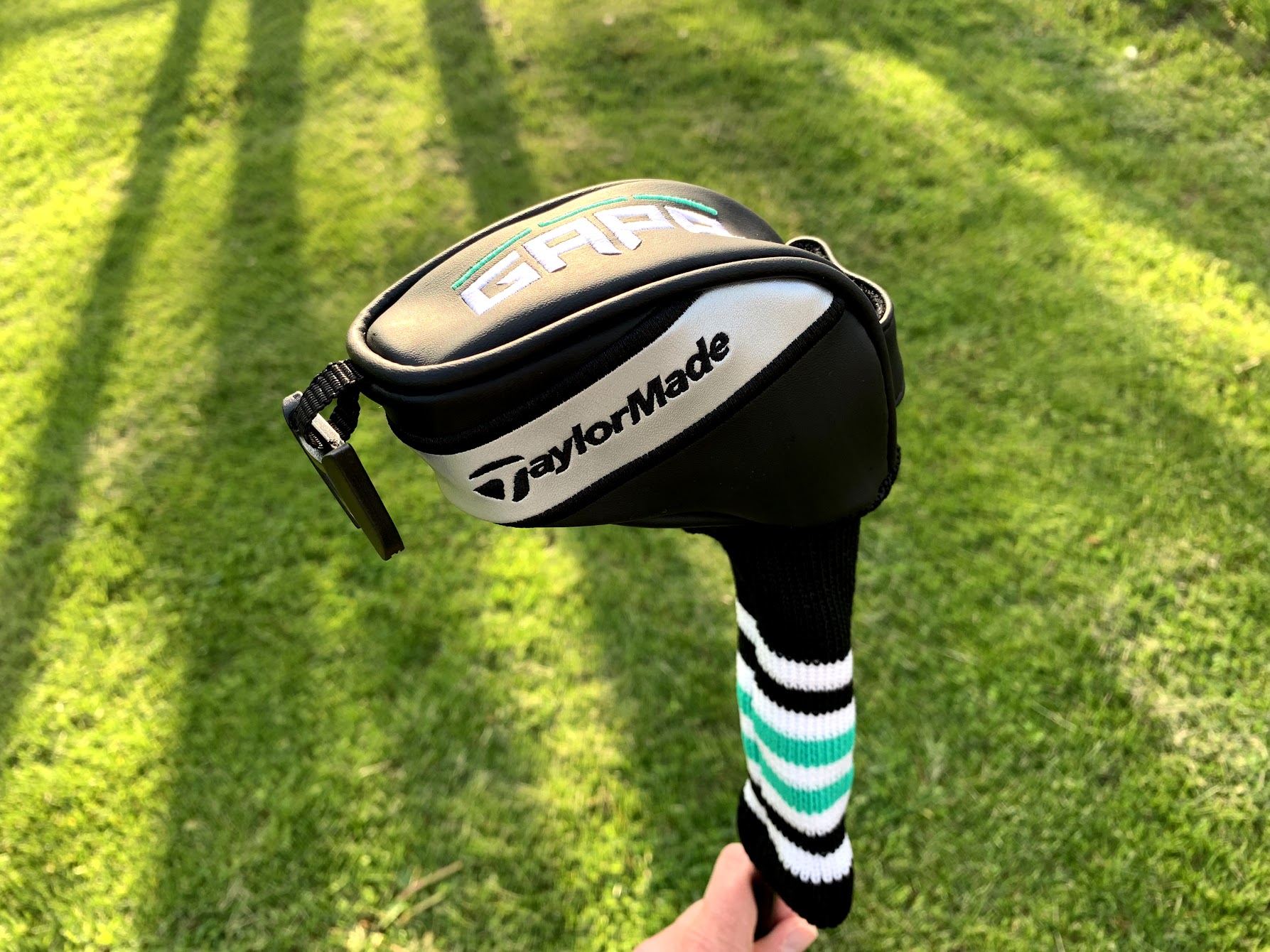
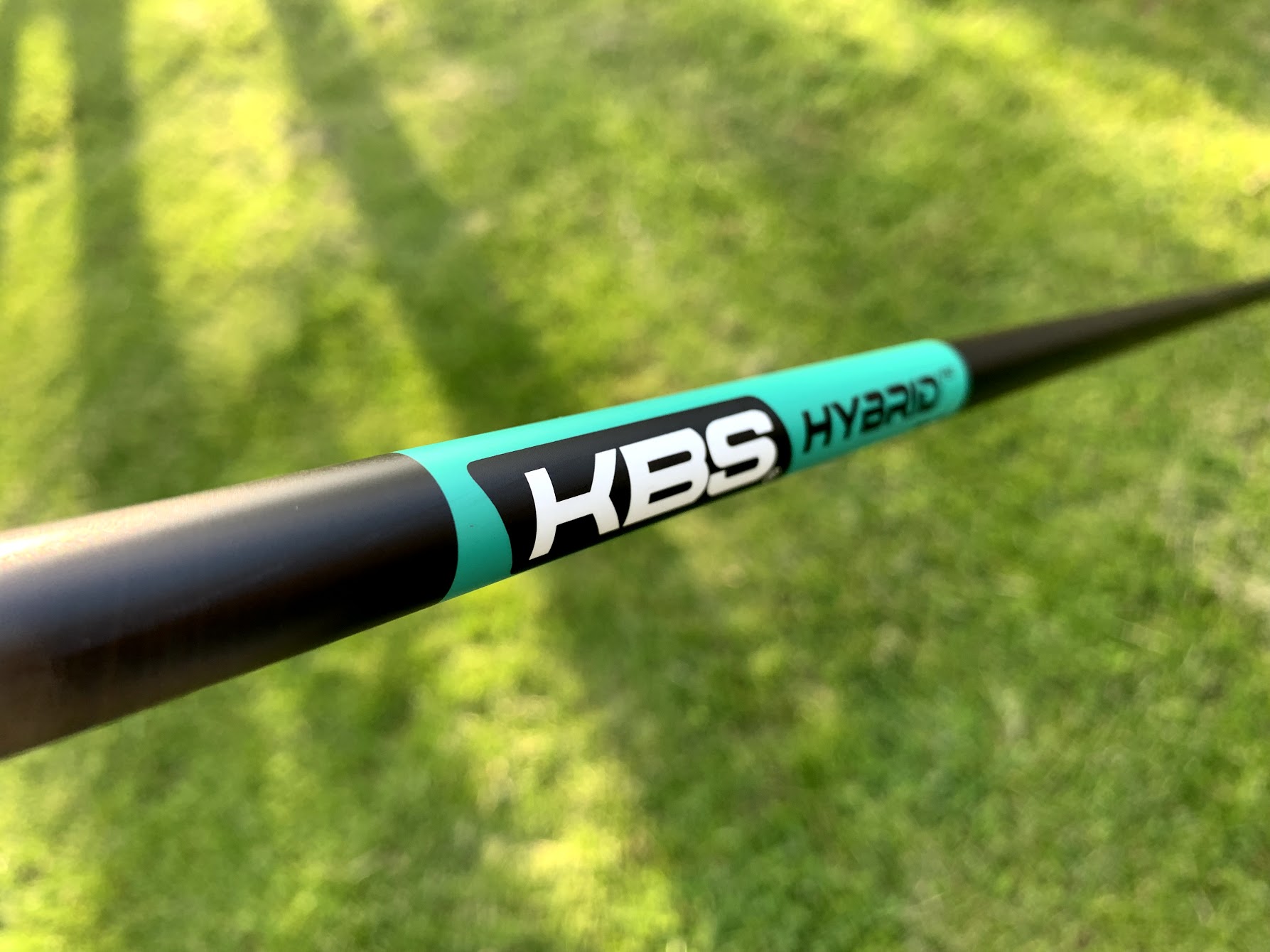
The TaylorMade Golf GAPR utility club is much more than your typical hybrid. Designed to fill the yardage gap between your longest playable iron and shortest fairway wood, the GAPR might be your new favorite club in your bag.
When we had club designer Tomo Bystedt on the podcast, he let us know upfront that we should think differently about what a utility club could be. Yes, the TaylorMade GAPR fits where a hybrid or driving iron would; but thanks to three distinct clubhead designs and trajectory options you can finally bring uniformity to the distances in your game.
As mentioned in the video above, my experience with the TaylorMade GAPR has been very positive. Turning down the loft on the GAPR Mid to 18 degrees perfectly bridges a 15-20 yard gap between my gamer 4-iron and fairway wood. I prefer the look and feel of a driving iron versus a hybrid, especially off the tee. Like my typical gamer utility iron, the GAPR does its job extremely well in a variety of playing situations.
While not the longest option in its class, the GAPR is extremely versatile as I was able to shape shots easily, even with the wider sole design. Miss-hits geared back toward my target line with minimal distance loss, and the sound of the club is incredible.
The ball flight with the GAPR Mid performed as-advertised, giving me a lower option on windy days (as was the case in the video above). My gamer utility flies a bit higher, which is perfect for me on most conditions. However, the GAPR will find its way into my bag when the occasion presents itself.
For more information on the TaylorMade Golf GAPR utility clubs, including the many loft and head shape options, visit their product page here.
Up Close: Odyssey Stroke Lab Putters
Watch our Up Close video with Odyssey Stroke Lab putters for an overview of this great new product.
The Odyssey Stroke Lab putter line is the newest installment in the company’s incredible lineage of great products. Designed under the watchful eye of Sean Toulon, Stroke Lab offers strategically placed weighting throughout the putter to not only help you make more putts, but to actually improve your putting stroke.
Watch our video below for an overview of the Odyssey Stroke Lab putters.
Listen to our interview with Sean Toulon on the Golf Unfiltered podcast here.
Burton Golf CSX Stand Bag Review
The Burton Golf CSX Stand Bag offers a stylish, lightweight option for walkers and riders alike. Read our full review here.
The Burton Golf CSX stand bag is perfect for the player who loves to walk but often rides due to convenience. Lightweight, sturdy and stylish, this bag will appeal to a wide range of players who want more out of their golf bag than just good looks.
First Impression
First, I’m not a walker. I like getting in a cart, getting a bag of beer, hitting 6 range balls, rolling a few putts, and it’s off to the first tee. All that being said, I’m also not a fan of large bulky cart bags that take two grown men to load on a cart. The Burton Golf CSX stand bag is prefect.
One last reminder, I’m not a walker. However, this bag is great for the walker. My previous bag was a Titleist carry bag. For those of you who know Titleist bags, they made really small carry bags, large cart bags with enough pocket space to please the likes of Mary Poppins, and then a somewhat oversized carry bag line.
Mine was the latter.
Burton managed to make their bag extremely light, with enough pocket space to please a riding trunk slammer like myself. And I will have to say, in the amount of time I carried my clubs from the car to the cart, I noticed a few of the IDEAL features every walker would love.
The Strap
Maybe the most padded double strap of any carry bag I’ve ever lifted. Not only are the shoulder straps extremely padded, there is a pad where the two straps meet that would usually poke the hell out of the center of your back. Not at all the case here. And maybe I just got lucky, but when I went to adjust the straps to fit everything to my liking, I didn’t have to do a thing. Perfectly balanced, and perfectly comfortable, I wish even my laptop bag was this easy to adjust.
The Padding
As I mentioned above the padding was perfect on the straps, and the same was true for the rest of the bag. Someone actually thought this bag all the way through. Padding on the body of the bag was perfectly placed to rest comfortably against the small of your back or near the top of your gluteus (to put it professionally). Even the handle is padded and for comfort when loading the bag onto a cart.
Lightweight and Spacious
As an established trunk slammer, and given that I don’t run to my car in the rain, I definitely don’t play golf in it. So, minus any rain gear, umbrella, etc, I only fill my golf bag with the necessities. A couple sleeves of balls, tees, tools, range finder, and the occasional flask, for which this bag has an absolutely perfect pocket. With these packed neatly into the generous pocket space for being somewhat of a petite bag, you’ll be pleasantly surprised at the weight and comfort.
Last, it’s sturdy on the cart. Many carry bags can be too small for a cart and tend to flop and rattle around (if you’ve ever let the Fonzy or Hackett drive for 18 holes you’d definitely understand where I’m coming from) when 6” deep French drains that could be avoided make you realize you should have taken a piss in the woods on the last tee box.
All in all, good, solid, stylish bag. Well done Burton.
(Adam Tatro — the other Adam of GU — is a former collegiate golfer and PGA teaching professional.)
Ben Hogan Precision Milled Forged Mallet Putter Review
The new Ben Hogan precision milled putters offer superb design and feel at a price you cannot beat.
The Ben Hogan Precision Milled Forged putters are the company’s return to the flatstick for the first time in years. Combining minimalistic design, modern tech and balanced weighting, these putters are ideal for those in the direct-to-consumer market.
Background
To me, putter head designs have been getting a little ridiculous lately. Every time I go into a golf shop to survey the putting green, I seem to pull a few putters off the shelf and will literally look down, laugh, and shake my head at a monstrosity of a putter. I remember the days when putters had just a few simple but effective designs where you could line them up easily, and just roll it. Much easier said than done, I know, but putters nowadays look like they came out of the DeLorean alongside the 1950-2000 sports almanac. These futuristic designs can look a bit bulky and extravagant, but do they really improve your putting?
Half of what makes a good putter lies between a golfer’s ears, and a good portion of that comes with feeling comfortable over the ball: specifically, the look of how the putter sets up behind the ball, and the alignment lines to take dead aim.
If you are like me, you like a simple and clean look to a putter: a design that won’t distract you with four different color schemes with wild curves and loops and whatever else they can think to throw on a putter head. And if you reminisce of the simpler days of old like I do, you will enjoy the new 2019 line of Ben Hogan Precision Milled Forged Putters.
The Look
You can’t get much cleaner and simpler than this. The all-black, soft 1020C carbon steel forged putter head with a single long line alignment looks very sleek; a sort of throwback to the old Dual Force Rossie II, the putter that made me fall in love with mallets.
One of the things I like about the look are the geometric edges on both heel and toe sides of the putter head that run parallel to the club head path. This gives golfers additional yet subtle alignment lines, without overkilling you with a multitude of lines and dots.
The Design
The putter is true forged using one metal, which provides soft, uniform, and consistent ball strikes with every putt. Most putters nowadays have inserts to soften the feel of the putter, but I found the feel to be soft enough as-is to provide great touch with both short and long putts.
Final Thoughts
Ben Hogan has been crafting high quality golf clubs for decades, especially since resurrecting the brand years ago, only recently diving into the putter world. Their overall vision seems to be simple: deliver high quality golf clubs direct-to-consumer, without distracting them with new flashy “innovative” designs. And they have stayed true to their model with their new 2019 putter line.
(Matt Hackett is a former collegiate golfer and lives in the Chicago area. Follow him on Twitter at @matthewliam)


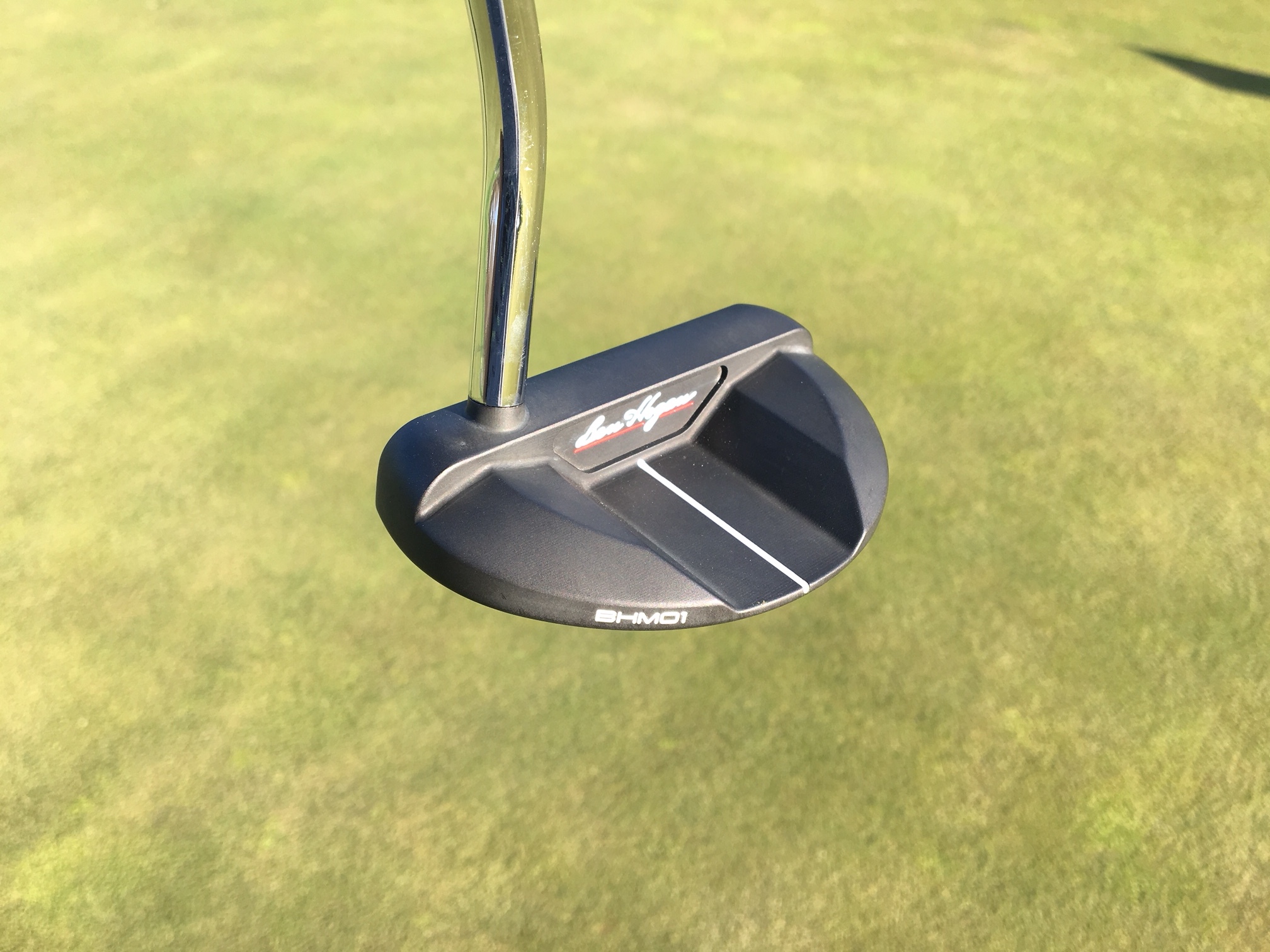

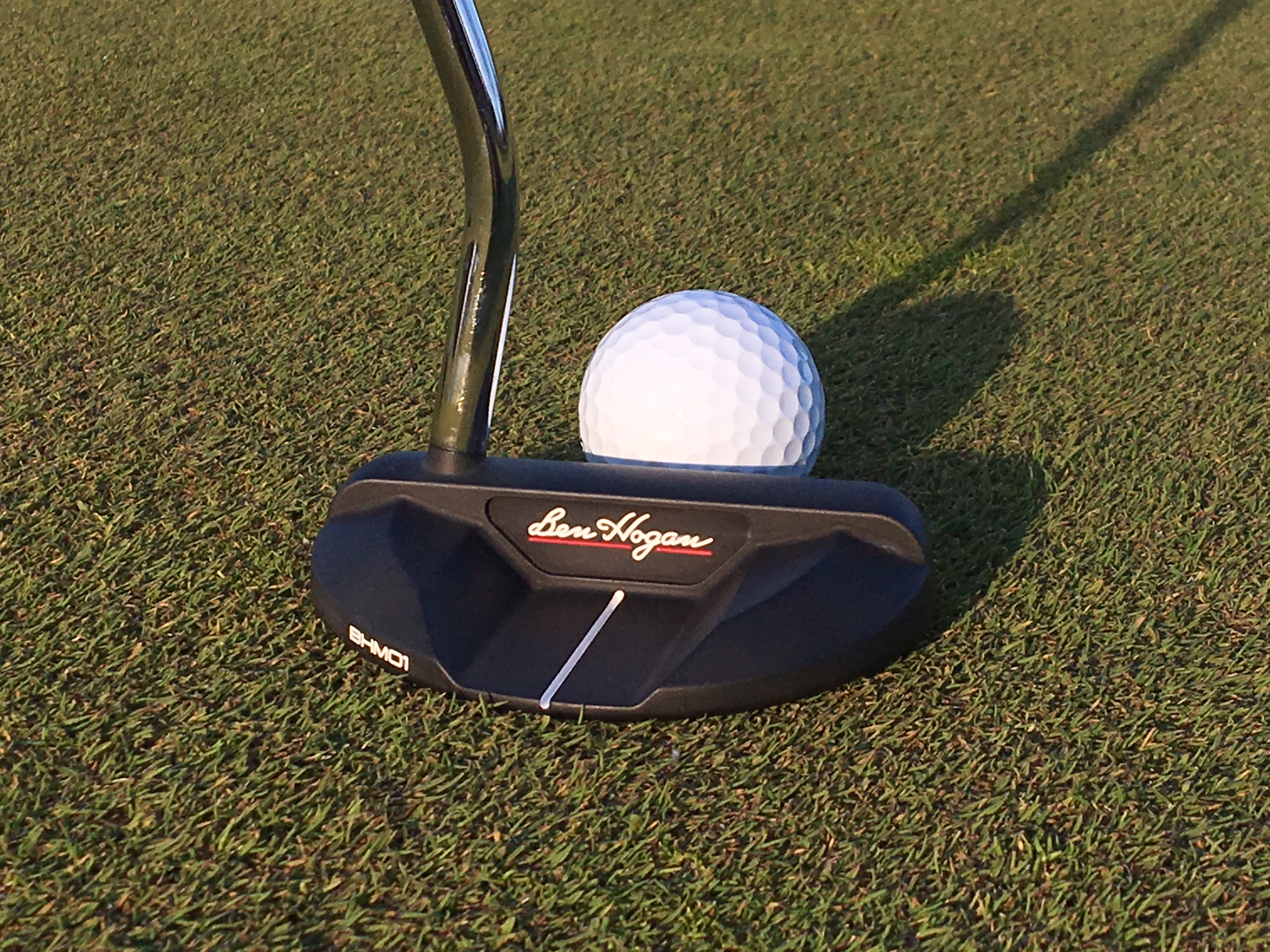

Srixon Z-Forged Irons Review
The Srixon Z-Forged irons are a triumph in design and playability. Read more about these incredible irons here.
Srixon Z-Forged Irons
Experience Perfection in Design
Srixon Golf continues to impress with their newest line of player irons, the Srixon Z-Forged blades. As impressive as they are playable, the Z-Forged irons were built for lower handicaps but will appeal to a wide range of golfers.
What do you look for in a blade?
Most of us love the clean lines, smooth finish and minimalist design that blades offer. We all know that their thin, smaller heads require more precision at impact than larger, thicker game improvement irons. This is often reason enough for most players to admire them from afar, placing them back on the rack after thinking “I’m not good enough to game these!”
This reaction would be a mistake with the Srixon Z-Forged irons.
Yes, they are beautiful. Yes, their clubheads are small and their toplines thin. You will feel the difference between a center-face strike and one that is less precise. Miss-struck shot distance will shorten and a green will be missed.
But isn’t that the point?
The Benefits of Z-Forged
Understanding and feeling when you miss a shot is one of the things that makes this game so great. But that doesn’t mean your clubs have to be overly punitive.
The Z-Forged irons are surprisingly forgiving for a blade that looks like it wouldn’t be. Off-center hits did not lose as much distance as other clubs in this category that I’ve tried. This is incredibly important because, as we all know, there is only so much room for punishment in this game. We can take our bumps, write down our score, and still have the chance to get back on track.
Srixon shows they understand this dynamic well in the design of Z-Forged. Each club is forged in 1020 Carbon steel and is incredibly balanced, offering just enough “meat” behind the sweet spot to give you the distance and forgiveness you need. Their VT-shaped sole opens the book on all the shot types you need and from any lie. Hitting the center of the face feels incredible; so much so that you’ll want to play another 18 or reload your range ball bucket just so you can keep hitting these irons.
And their sound? Mercy.
It is clear a ton of planning and thought went into the design of the Z-Forged irons. From a digital design to state-of-the-art prototype printing to the hands of Srixon’s master artisans, Z-Forged is the culmination of the combined talents from some of the game’s best.
With over 40 custom shaft and grip options available, you can truly make your Srixon Z-Forged irons your own. To get started, visit their product website here and treat yourself to a set of clubs you’ll never forget.
SuperSpeed Golf Swing Trainer Review
In this video review, we take a closer look at the SuperSpeed Golf swing trainer.
In this video, Adam shows a summary of the SuperSpeed Golf swing trainer, how to use it, and the benefits of the system.
For more information on SuperSpeed Golf, be sure to visit their website here.
GolfLogix Putt Line Review
The new Putt Line upgrade feature for GolfLogix takes the guesswork out of putts during your round. Read our review here.
GolfLogix is one of the most popular golf apps available on the market, and with their new Putt Line feature, they separate themselves further from the pack.
The feature, which is now available for customers wishing to upgrade their accounts, takes most of the guesswork out of putting. As the feature’s name implies, Putt Line shows you the distance and line for any putt on the green.
“It couldn’t get any easier to read a putt on the green,” says Pete Charleston, President at GolfLogix. “There’s no more guessing how uphill or downhill the putt is or how far right or left to aim. With one swipe, the Putt Line feature will give the perfect read, similar to what a very good caddie provides.”
In addition to showing you the distance and line of each putt, Putt Line also allows golfers to determine how fast the ball will roll and how hard they need to hit the putt to reach the hole. With the ability to set the exact green stimp (speed), Putt Line provides the perfect read of both distance and aim.
Accessing and using the new feature is simple. After choosing the course you are playing from GolfLogix’s library of over 13,000 courses, click on the “Putt” submenu at the top of the screen. If you’ve signed up for the upgrade, this will take you directly to Putt Line and all the details it offers.
I found Putt Line to be extremely accurate and useful on the course during a recent round. While I am a believer that nothing will ever replace the skillset of good, old-fashioned green reading with you eyes, Putt Line comes really darn close. Knowing exactly how fast to hit the putt and the overall contour of the green is helpful for beginners and pros alike, even if used once in awhile during your round.
The challenge, of course, is remembering to use the feature on putts while playing. Golfers are creatures of habit and pulling out your smartphone to read a putt must be engrained in your normal routine, which can be difficult. I found Putt Line to be most helpful on longer putts as it gives me an overall look at slope of the entire green, which can help your lag putting dramatically.
For more information on the Putt Line feature, visit GolfLogix’s website here.
Callaway Apparel SWING TECH Clothing
Callaway Apparel SWING TECH golf clothing offers maximum flexibility in every article to give you the freedom you need on the course.
Finding the right fit and feel for your golf game usually applies to a new set of clubs. However, when was the last time you paid as close of attention to the fit and feel of your golf wardrobe?
Callaway Apparel hopes to change your perception of how clothing should perform on the golf course with the new SWING TECH clothing series.
Golf polos are a dime a dozen. The same can be said for pants, shorts, and even outerwear. Looking through my closet, I have items from at least a dozen different brands. No two shirts are the same, and that means the fit from each is also different. For a game like golf that requires consistency from round to round, wouldn’t it make sense to maintain a similar feel in your wardrobe as well?
Callaway Apparel SWING TECH was built with the serious player in mind. Every motion of your golf swing involves multiple muscle groups, physical forces acting against one another, and biometric angles that require optimal range of motion. If any article of clothing constricts that motion, your game is as good as ruined.
SWING TECH addresses this concern head on. Designed with a classic fit in every article option, each also provides maximum stretch in its fabric to give you the freedom you need on the course.
Each article in the SWING TECH line features this flexibility in its fabric, and options are available for both men and women. For more information on the technology and style options, visit the Callaway Apparel SWING TECH website today.
Golf Pride Tour SNSR Putter Grip Review
The new Golf Pride TOUR SNSR putter grip series offers incredible feel and control in multiple sizing options.
Golf Pride Grips are a household name in golf equipment. Boasting decades of success and a client list that includes 80 percent of all Tour-level players, they are a brand to be trusted. Their new TOUR SNSR putter grips build on their tradition of quality.
Technology and Feel
Putter grips are an extremely personal equipment feature for any player. Golf Pride knows this better than anyone, and their TOUR SNSR grip is a reflection of that.
The grip is available in three different shapes: Contour, Contour Pro, and Straight. Each offers additional sizing options to give you the perfect feel based on your preference. For example, the Contour Pro is available in both 104cc and 140cc, with weighting options of 90g or 124g. Different tapering options are also available.
The SNSR features a patented rubber blend that feels softer toward the butt of the grip and more firm toward the tip. This blend allows for maximum feedback in your hands on each putt, letting you know exactly what to adjust on the next stroke. You are able to naturally “lock in” your top hand, allowing a consistent, repeatable stroke. Due to the grip’s softness, you’ll find that a lighter grip pressure in your hands is optimal.
The Golf Pride TOUR SNSR grips are now available worldwide in all major golf retailers or via the company website.
5 Steps to Choosing a New Driver
Thinking of buying a new driver? Follow these five steps to find what’s best for your game.
PGA.com
Purchasing a new driver is always an exciting time for a golfer. You’ve spent hours researching different brands, narrowed down a list to your finalists, and maybe hit a few balls at your local retailer. In time, you feel like you’re ready to make the jump.
But before you drop hundreds of dollars on a new club, have you done everything you can to make the right decision? Does your head start swirling because of all the options at your disposal? Or are you so brand loyal that you’ll just go with whatever new release pops up from your favorite?
Here are five steps to take before purchasing your new driver this golf season.
Step 1: What Do You Want to Gain?
The fear of missing out (FOMO) is a real phenomenon. Everyone in your foursome suddenly upgraded their drivers this year, and now you feel like you have to as well. But are they really benefiting from their purchase?
The first step to choosing a new driver is asking yourself what you hope to gain from the new club. Are you hoping to hit the ball farther? Are you looking for more forgiveness? Or do you simply want to find more fairways?
In many cases, taking a golf lesson to fix a swing flaw can lead to impressive gains with your current driver. Finding the center of the club face more often, for example, can significantly improve your distance and accuracy. This can help you find those extra yards and short grass more often without switching your equipment.
But what if you’re an accomplished player who hits the ball solid?
Step 2: Identify the New Tech You Need
If your swing is sound and consistent, you may benefit from tech in a new driver. This is particularly true if your driver is more than five years old. Modern drivers are more technologically advanced than ever before, including artificial intelligence designs. But what features should you focus on before you buy?
If you are looking for more forgiveness in a driver, where you experience less distance loss on off-center hits, you may consider a driver with a high moment of inertia (MOI). In a nutshell, this means the club will twist less when you miss the center of the club face.
If you want a driver that helps you launch the ball higher (or lower), you should consider an option that allows you to adjust its center of gravity (CG). This will also affect spin on the golf ball, and can help a golfer control ball flight more consistently.
Most brands offer drivers with multiple adjustable features, including face angle, loft, lie angle, and more. However, understanding what you need help with most will help you choose the best driver for you.
Step 3: How Do You Want a Driver to Feel?
All the bells and whistles found in modern drivers are great, but most golfers will agree that how a club feels at impact is just as important.
New face technology can significantly alter the way a driver sounds and feels when hitting a golf ball. Modern clubhead construction can make a driver sound “sharp” or “tinny” at impact, while other brands may feel “dull” or “muted.” Depending on your preference, these qualities may limit your driver options right from the start.
After deciding what tech you want in a driver, shorten your list of finalists to two or three options. Visit a golf club retailer or your local pro shop that carries those brands and hit a few balls with each driver. The goal here is not to fool around with the club’s setting just yet; instead, focus on how the club feels when struck.
Step 4: Dial in Your Numbers
After whittling down your list to a couple options that sound and feel great, it’s now time to fine-tune the driver to optimal performance.
This is where your local golf pro or certified club fitter is vitally important. Not only do they have the ball launch monitors and tech required to give you the best fitting possible, they also have access to the best brands available on the market for you to try.
A certified club fitter will also compare your current driver to something newer. They can also optimize your current driver’s settings (if an option) to do a true comparison. In some cases, you may be able to achieve the numbers you’ve been looking for with your current driver.
Does your fitting show a newer driver will benefit you more than your current? It’s time for the final step.
Step 5: Keep an Open Mind
We all have our favorite brands. We all like shiny new things.
But sometimes what’s best for our game isn’t what we expected. In fact, we may already have the best driver for us in our bag. And that’s OK.
Keeping an open mind to all available options on the market, including what’s already in our bag, is the most important final step in the process. Expanding our horizons and considering equipment from all major brands — even those we’ve never tried — increases our odds of finding what’s best for our game.
We might be surprised at what we find.
Conclusion
Following these steps will make you a more informed consumer, and you’ll have everything you need before making a purchase. Understanding what you want to gain in a new driver, what tech is available to give you those gains, understanding your feel preferences, and working with a certified club fitter can get you where you need to be. Above all else, keeping an open mind on all brands and options increases your chances at finding the best driver for you.
What steps do you follow when purchasing a new driver? Share your comments below!
TRUE Linkswear Major Golf Shoes Review
The TRUE Linkswear Major golf shoes are Tour-quality and perhaps the most comfortable shoes they’ve ever designed.
TRUE Major golf shoes.
The concept of what to expect in a golf shoe has changed dramatically over the years. No longer are we bound to the confines of saddle designs and raised spikes; comfort is a must, and brands have agree it is of upmost importance.
TRUE Linkswear has specialized in comfort for years, and their new TRUE Major golf shoes might be the finest they’ve ever produced.
Background and Technology
Is it weird to say there’s a technology aspect of a golf shoe design? We’re not talking computer chips and flashing lights, of course. However, the TRUE Majors are built in such a way that one cannot help but think “state of the art.”
Billed as their “highest performing, Tour issue model”, the TRUE Majors are strong enough to withstand any weather condition or terrain. Waterproof full grain leather and outdoor grade Nubuck suede comprise their outer layer while a lightweight midsole and comfort sock inner protect your feet from pain and discomfort. Flexibility is a focus in the TRUE Majors, making them seem as if they were built specifically for your foot right out of the box.
The unique Paracord Lacing system holds each shoe onto your feet snugly yet comfortably, providing stability throughout your swing. I hate a shoe that has sporadic “tightness” throughout the tongue due to inconsistent placement of the laces. The TRUE Majors’ lacing system avoids this problem entirely.
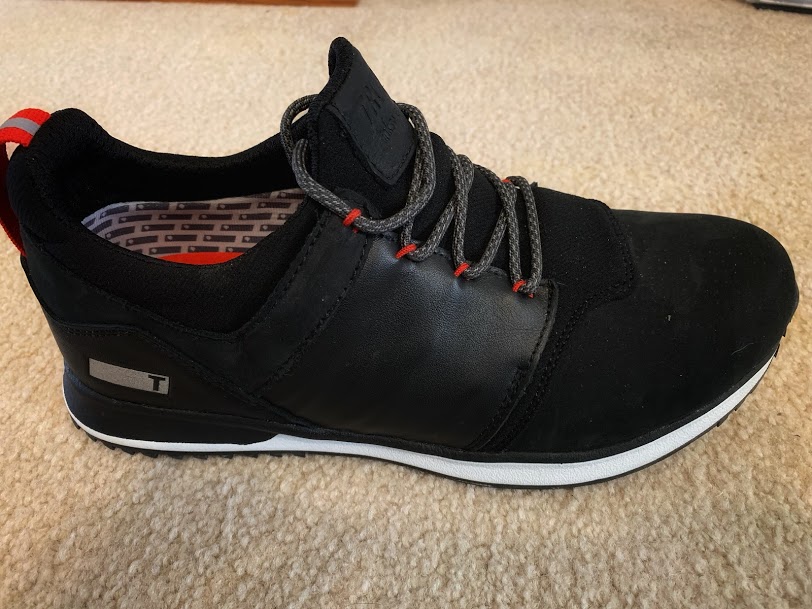
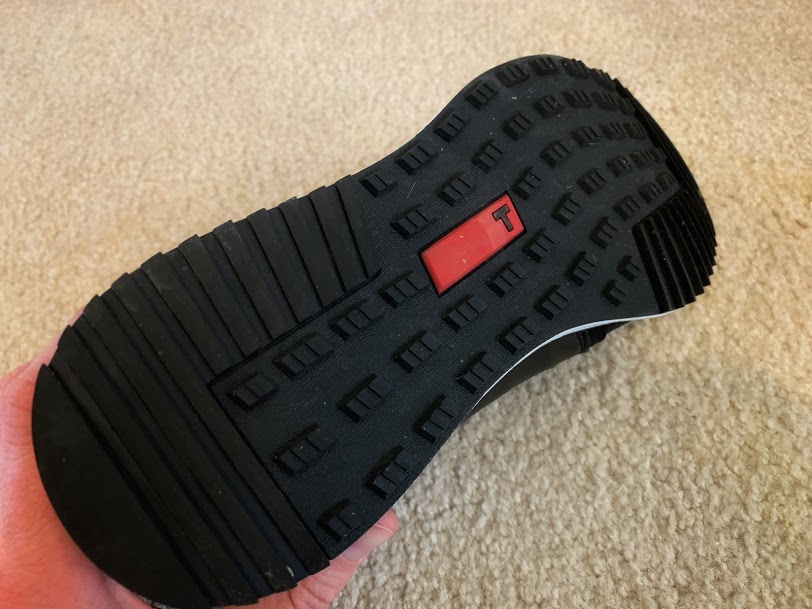
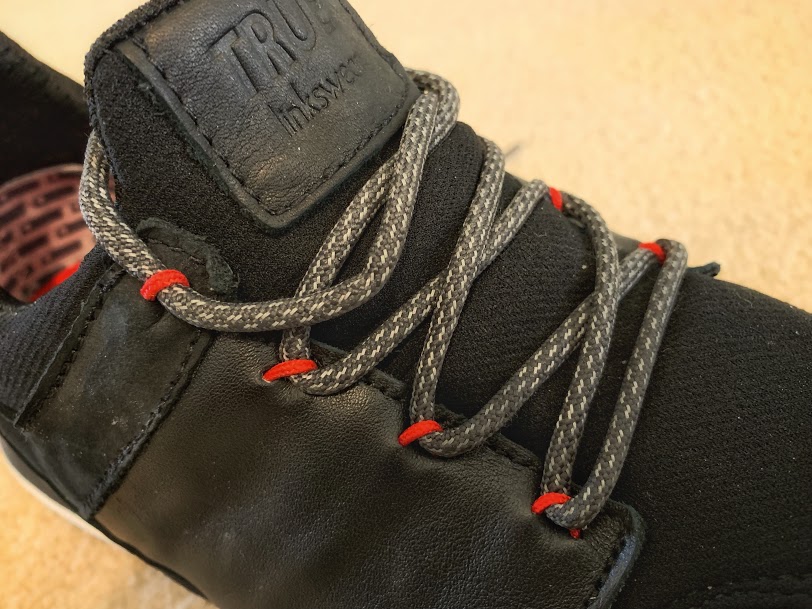
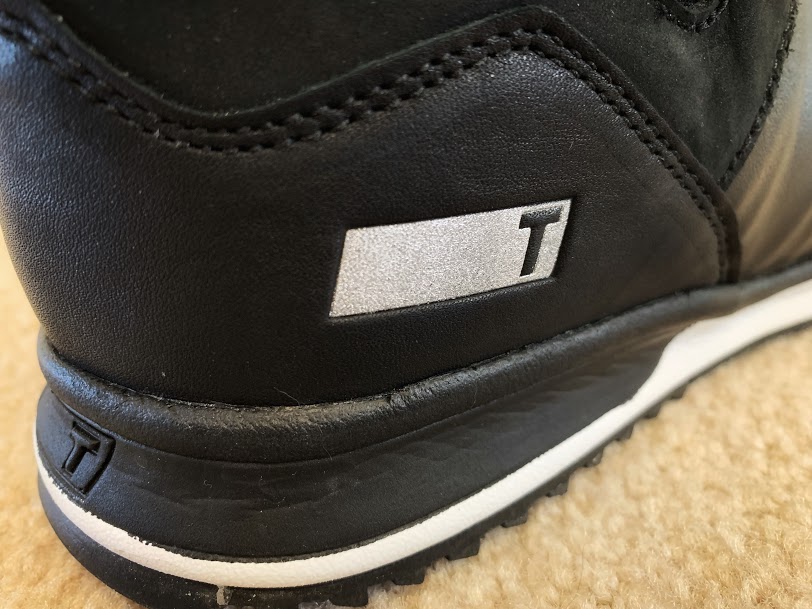
Feel and Performance
When you put on a new pair of TRUE Linkswear shoes, you expect them to be comfortable immediately. It’s simply the thing they are known for, and the TRUE Majors follow suit wonderfully.
I’ve always loved how close to the ground the soles of my feet feel when walking in a pair of TRUEs. I prefer to feel the change in terrain throughout my round, especially in bunkers and on the putting green. I don’t want a thick shoe sole that hides the contours of a golf course, and while the TRUE Majors aren’t the thinnest shoes ever, they keep me in touch (literally) with my surroundings.
The traction on the bottom of the shoe — which is much closer to that of a sneaker as opposed to your typical golf softspike — was more than adequate without feeling like I was digging into the dirt. I’m interested to see how they will perform in wet conditions, since the rubber nubs are quite shallow compared to competing designs.
As someone who likes to walk every so often during a round, I have no doubt the TRUE Majors will keep my feet blister-free. However, the thicker leather and suede outer combo seems a bit warm, which may be concerning on warmer days.
Overall Impression
When it comes to buying a golf shoe, I believe you should dress for the conditions of the day. I simply do not think there is a one-size-fits-all approach to proper foot apparel for this game. You should not wear the same pair of golf shoes for all conditions; there are simply too many great options.
The TRUE Majors, while able to be worn in any condition, are best for cooler days or soggy rounds. They are great for golfers who prefer to both walk or ride, and their construction guarantees their longevity. This is a premium quality golf shoe that will last for many seasons.
The TRUE Linkswear Major golf shoes retail for $199.99.
Callaway Epic Flash Driver Review
The Callaway Epic Flash driver is a breakthrough in golf club design. Does its performance match the fanfare and build up?
Callaway Epic Flash Driver
The future of design engineering
Every year, club manufacturers tout their newest technology as being not only better than last year’s model, but also the best on the market. The problem is, breakthrough advances in technology come far less often than annually. Year-over-year, little tweaks to club designs usually don’t provide substantial improvements to ball striking, but every 4-5 years, a new idea or new technology is introduced that paves the way for club designs going forward.
A History in Innovation
In 2004, TaylorMade came out with the adjustable weight screws in their R7 Quad, which let golfers alter the center of gravity to tailor their shot shape.
In 2009, Nike’s SQ Dymo 2 Str8-Fit (are those nuclear launch codes?) introduced hosel adjustments to provide eight different face angle and lie settings.
In 2013, TaylorMade unveiled their SLDR driver, allowing golfers to slide a weight based on a golfer’s desire to draw or fade their shots.
I could keep going, but you get the idea. About every 4-5 years, a breakthrough idea is introduced to the golfing world by one OEM, which then gets generally adopted by other OEM’s in a similar fashion going forward, being careful not to infringe on the original patents. Not including the PXG vs TaylorMade fiasco.
Golf’s newest breakthrough idea comes in the form of Flash Face Technology in Callaway’s Epic Flash.The most intriguing part isn’t the actual club design itself, but rather HOW it was designed, and how it likely will change the way golf clubs will be designed in the future.
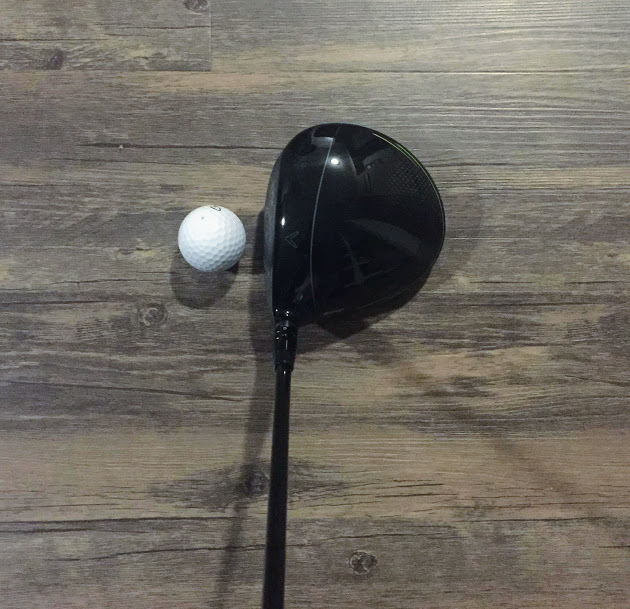
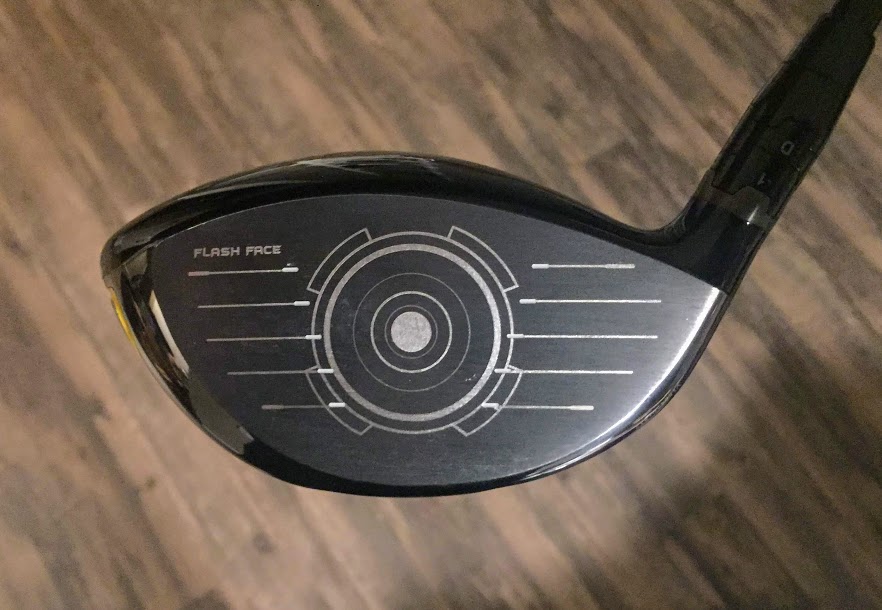
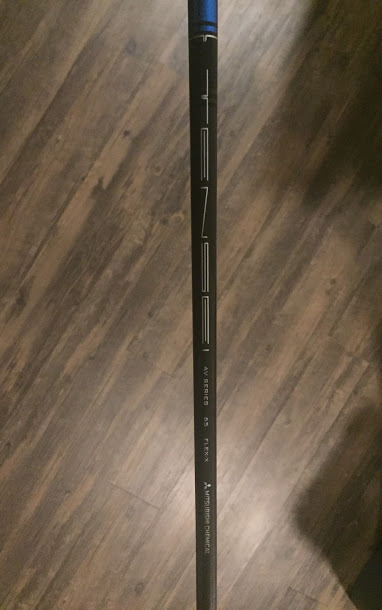
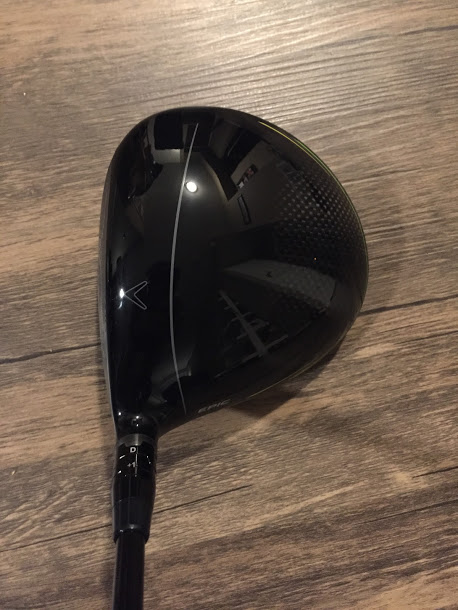
Artificial Intelligence and Machine Learning
I’ll admit, artificial intelligence is starting to scare the bejesus out of me with every YouTube video I see of robots doing backflips and opening doors. Terminator 2 is looking more like science non-fiction every waking day. Seriously, the stuff of nightmares.
But I think we have finally come across a use for AI that every golfer (and human) can get behind, and I believe Callaway has paved the way by using it to design golf clubs.
The engineers at Callaway programmed a super-computer with machine learning to analyze and test 15,000 different face iterations for the Epic Flash to optimize launch conditions. Not five… not six… not seven... fifteen thousand. The winning result is a wildly unconventional face design that almost resembles ripples of water centered around the point of impact.
Now that artificial intelligence has been introduced to perfect the club face design, it will likely change the way other OEM’s approach their club designs with their research and development teams.
Results
I have to admit, I have not been able to hit a driver consistently in what feels like years. My current driver came out maybe 5 years ago, which in golf years may as well be about 15 years. It has weighted screws that can be adjusted to fit my golf swing, with a shaft I was fitted for. It’s a solid club; I just felt I was still leaving something on the table.
Well, the first ball I hit with this club, I immediately turned back to the Golf Unfiltered OG (Adam), and we both had the same reaction. Oh… shit… this thing is HOT! The shot felt great, looked great, and sounded extremely solid. Below are the average numbers compared to my 5 year old driver:
For my game, that is pretty significant improvement because I thought I was near maxed on distance, give or take a few yards. But the number that really sticks out to me is the smash factor difference. Basically saying with the same swing speed, the ball will jump off the club face faster, which is a testament to the club design.
Overall Impression
There are plenty of websites that run the numbers through the gamut, comparing all the new drivers. If you’re basing your next driver decision solely on those numbers and those tests, be my guest. What is optimal for one golfer is far from ideal for the next. But one thing I was curious about was how often golfers replace their drivers, and I went to Twitter to test the waters.
To me, this says most golfers will replace their driver when a new idea or technology is introduced that really catches their eye from a performance aspect. 77% of golfers are swinging a driver that is at least 3 years old. If you are one of them, and wonder whether it’s time to upgrade to the newest technology, the answer is: probably to very likely.
Now, whether or not shelling out $500+ for the upgrade is worth the uptick in performance (or even within your budget) is another question. But if you are serious about your golf game and looking to take the next step, seeing a club fitting specialist should be at the top of your to-do list.
And the first driver you should test is the Callaway Epic Flash.
Matt Hackett is a former collegiate golfer and equipment reviewer for Golf Unfiltered.
Flightscope Mevo Review
The Flightscope Mevo is an accurate and affordable ball launch monitor option to improve your practice sessions.
Ball launch monitors are one of the most important pieces of technology that have sprung up over the years to improve your golf game. The Flightscope Mevo is an affordable option for golfers who take their practice sessions seriously but don’t want to drop thousands on pricer models.
Why Buy a Mevo?
Most launch monitors worth your attention come with a hefty price tag, can be difficult to set up and often require ample space to use. The Flightscope Mevo ($499) takes the market head-on by offering consistent and accurate performance at a fraction of the price of comparable units.
The Mevo’s mobile app is incredibly intuitive.
The Mevo has multiple functions to appease any player and can be used for more sports than just golf. Used in conjunction with a mobile app for any smart device, the Mevo is also minuscule in size compared to most other monitors on the market. This makes the device absolutely perfect for personal use, fitting securely in a side pocket on your golf bag.
Mevo used 3D doppler radar to record shot distances, launch metrics, smash factor and other numbers useful to your game. Flightscope also includes numerous sheets of small, metallic sticker dots that can be placed on any golf ball to increase the accuracy of spin rate outputs as well.
Finally, recent updates to the device include the option to video your swing while simultaneously providing the same metrics described above. These features combine to offer a robust technology package that make a $500 price tag that much more of a bargain.
How did the Mevo perform?
Launch monitors have a tendency to differ widely from one another due to the technologies within each device. Some brands use radar that tracks the golf ball from lift off to landing. Others use math equations to “calculate” aspects of each shot, providing more of an estimate than actual data.
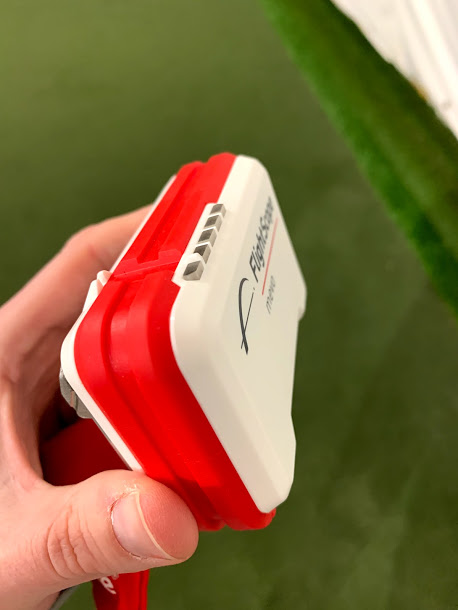
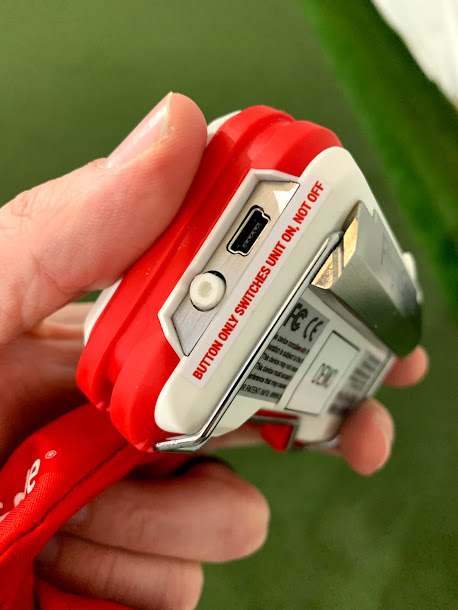
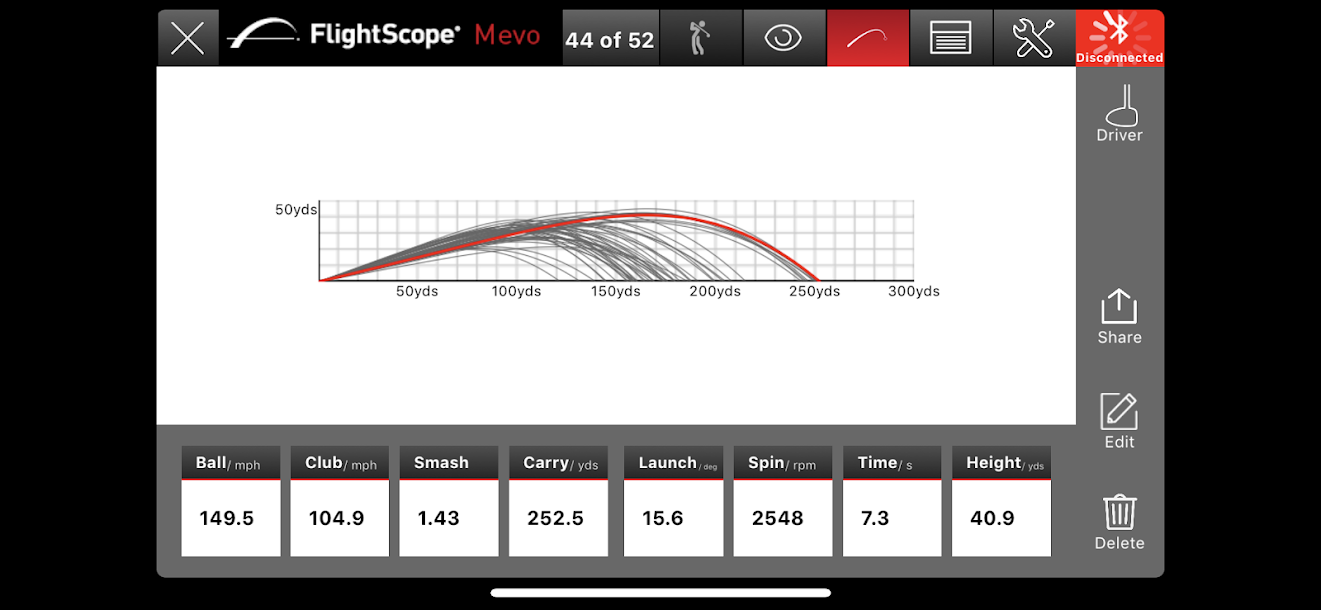
The Mevo lands somewhere in the middle. I found the unit’s ability to track my shots to be impressive, accurately capturing and reporting data in line with numbers I’ve seen on more expensive models. Trial and error taught me that aligning the Mevo properly to your golf ball prior to hitting (the provided instruction manual was very helpful) is critical to the accuracy of the data.
The height of the unit in relation to your golf ball’s height, for example, is the biggest issue I ran into while hitting from a driving range mat. If the unit is placed below the ball, the data was all over the place. Online research gave me a tip to place the Mevo on to of the device’s box to remedy this issue.
What I liked the most, however, were the features in the mobile app. Practice sessions are grouped together and stored in an intuitive manner, read-outs are easy to understand and the data is very detailed. Following each shot my smartphone would read my distance aloud via the speakers on the phone, which was unexpected and very convenient.
There were some instances, however, when I felt the Mevo wasn’t registering accurately even after setting it up correctly. This was especially true with my longer clubs, when swing speed, launch and carry distances seemed “off.” For example, a well-struck shot with 104 mph swing speed and ideal launch conditions equated to carry distances shorter than what I’ve seen on other devices.
Regardless, you definitely get more than expected with the Flightscope Mevo. The most valuable aspect is simply the ability to capture accurate data on your game, which is the most important contributor to improving your scores.
TaylorMade Spider X Putter Review
The TaylorMade Spider X putter is the tenth anniversary of the extremely popular and high performing model used by many of the world’s best players.
When it comes to classifying a golf club as “forgiving,” most of us apply this term to drivers or irons. Manufacturers like TaylorMade Golf are leading the charge to widen the scope of what we think forgiveness can mean with golf equipment. Such is the case with their new Spider X putter.
History and Technology
TaylorMade Golf introduced the original Spider putter ten years ago. At the time, its large mallet head design was a bit polarizing for golfers more accustomed to blades or smaller mallets. However, players of all skill levels understood and appreciated the forgiving qualities stability weighting and the counter-balanced design offered.
It’s always a great feeling to know a putt will roll true regardless of impact location on the putter face. And if we’re being totally honest with each other, this applies to most of us.
Fast-forward to this year’s iteration, the Spider X offers upgraded stability via a heavy 320g steel frame and a lightweight (15g) carbon composite sole that feels perfectly balanced throughout the putting stroke. Already a fan of heavier putter designs, I immediately fell in love with how easy the Spider X was to keep on a consistent path through each stroke.
Alignment aids are hit-and-miss in putter design. Some companies want to throw as much “help” on the top of a club as possible, resulting in something that looks closer to freight train graffiti than an alignment aid. The other end of the spectrum? Blank slate, absolutely no help, good luck with life.
The Spider X features True Path Alignment that blends nicely into the overall aesthetic of the clubhead design. This allows you to see the intended target line quite clearly without being distracting. It almost feels like your putting stroke is on cruise control.
Finally, the improved Pure Roll insert promotes an immediate roll after every struck putt. This is accomplished by specially engineered grooves that increase topspin, thus helping putts stay true to the target line.
Overall Performance
The TaylorMade Spider X putter is exceptionally built and performs as advertised. It’s one thing to see statements like “The #1 putter on Tour” but actually feeling and seeing the club’s benefits in real life can make a believer out of anyone.
The putter feels incredibly stable throughout the stroke, to the degree that you can actually see your putting stroke improve. The weighting throughout the Spider X is superb, feeling perfectly balanced and comfortable to control no matter how far back you take the head back.
Over and over again I found the golf ball to enter a pure roll within milliseconds after being struck. Putts remained true to the intended target line, and even misses seemed to take a peak into the cup. I’m not insinuating that my putting suddenly became more accurate with the Spider X, but I definitely noticed my putts rolling closer to my target no matter where I made contact on the face.
Impact exuded a soft, muted sound that added to the soft feel of the putter face insert. While not incredibly unique, I definitely prefer a softer feel on short and longer putts, so this feature was a welcome sight.
The TaylorMade Spider X putter is truly a fantastic option for those looking to upgrade in 2019. Available in multiple color options and shaft neck bends, there’s no wonder why the Spider X continues to be a top choice for the world’s best players.
Sub 70 Golf 639 and 699 Irons Test
We go through a Sub 70 Golf 639 irons and 699 irons review to compare, contrast, and drool over these great irons.
Sub 70 Golf is an upstart golf equipment manufacturer that brings a small town feel to a big business market. Their direct-to-consumer model enables them to price their products significantly lower than competitors, but is performance compromised for an attempt to capture a sliver of market share?
I had the chance to test the Sub 70 Golf 639 and 699 irons recently, comparing them to what was currently in my bag. After the dust settled and the results were analyzed, it is clear that the Sub 70 irons performed as strong as higher priced competitors.
What Was Tested?
This comparison test was conducted at Mistwood Golf Dome, which is a driving range equipped with Top Tracer Range technology. This is the same ball launch monitor tech seen on professional golf telecasts and includes metrics on ball speed, carry yardage, launch and other factors.
The Sub 70 Golf 639 cavity back irons and 699 forged irons were compared to my current gamer cavity back irons. All clubs featured shaft profiles extremely similar (if not the same) to one another. For transparency, the 699 lofts are an average of 3-degrees stronger than both the 639’s and my gamers.
Shots were hit with each club in rotation, starting with my gamers as a baseline. The 639 irons were hit second, followed by the 699 model. A six-iron was used from each brand.
Sub 70 639 CB Forged Company Description
The Sub 70 639-CB Forged Iron is a workhorse for the player who seeks distance and control while retaining feel. It is precision forged and milled from a solid billet of DT-4 soft stainless steel for unparalleled feel and responsiveness off the face. The club is designed with a rounded leading edge and sole design to provide better turf interaction for the player who needs forgiveness, and the player’s style cavity back provides additional margin for error while not eliminating workability.
The 639-CB provides the best of both worlds, allowing for creativity and shaping of shots while providing the necessary forgiveness to the player in need.
Sub 70 699 Company Description
The Sub 70 699 is for the golfer that requires the newest technology in game improvement without sacrificing looks and shot making ability. The manufacturing process was fine tuned to provide the hottest face and the largest sweet spot attainable without sacrificing looks and playability. The precision milled face is a 1.7mm wide sliver of 455 Carpenter Steel, allowing for maximum compression and face flex for added ball speed, even on mishits. The hollow bodied head is injected with TPE, a resin like substance that stabilizes the face and creates improved feel and sound at impact.
The 699 is the successful culmination of Sub 70's desire to offer an iron that uses the latest in game improvement technology but retains the sleekness of a traditional player's club, inspiring confidence at address and power at delivery.
Data Snapshot
As you can see by the data snapshot above, which includes data from all three club types, there are a few clear differences. The longest distances recorded in the pictured sample were produced by the Sub 70 699 iron. This was expected, of course, as the standard loft in this model is 27-degrees; stronger than the other two irons. Launch was also higher throughout the test in the 699, which speaks volumes for the clubhead’s weighting design.
While not immediately clear in the snapshot above, the 639 irons and my gamers performed almost identically over the course of the entire test. In fact, I would go so far as saying the 639 cavity backs felt, sounded, and produced numbers I could begin playing tomorrow without noticing any difference from my current set.
Ball speeds across all three irons were similar, with higher speeds going to the stronger lofted 699 irons.
A quick note on Top Tracer’s roll distances: they are quite absurd. There’s no way any of the balls hit would roll that far hitting a mid-iron, so carry distance should be the main focus here.
Overall Impression
It is human nature to think if a product is priced nearly 50% cheaper than a competitor, performance is going to be significantly different than the more expensive option. You may automatically assume it will be much worse before trying it for yourself.
This is especially true — and in most cases, accurate — in the golf equipment industry. Value brands are available everywhere, and their technology/design characteristics are comprised of cheaper materials or manufacturing processes. These are fine options for the beginner or casual player.
The direct-to-consumer model flips that perception on its head. Eliminating third-party “interference” not only allows companies to get clubs into your hands faster, you also avoid any price mark-ups along the way.
Sub 70 Golf understands this well, and while their products are designed and constructed of materials that may not be as flashy or well-advertised as other brands, my test found that the end products perform just as strong as what I am currently playing.
This is not to insinuate that there is lesser value to products that cost more due to design characteristics, materials, or Tour presence. There are reasons why those clubs are widely used by the world’s best, and the intent of this review was not to shame anyone for preferring those options. However, it is clear that when the combination of performance and affordability matters (and when doesn’t it, really?), there are other options available to the consumer.
We will be doing much more with Sub 70 Golf throughout 2019, but our first impression of their 639 and 699 irons has been highly positive, especially when compared to what I’m currently playing.
The Sub 70 639 CB Forged irons retail for $514.00 (5-PW).
The Sub 70 699 irons retail for $428.00 (5-PW).
Artificial Intelligence and Callaway Epic Flash
Will new drivers like the Callaway Epic Flash be designed by tech like artificial intelligence moving forward? Equipment expert Michael Vrska explains more.
The technology, research and science that goes into new driver designs can be equally staggering and inspiring. The Callaway Epic Flash driver, for example, was designed using artificial intelligence that ran through more than 15,000 iterations before finding the perfect result.
As golf club expert Michael Vrska explains in this Tech Talk segment for The Hackers Paradise, much has evolved in golf club design over the years. What other techniques are being used by the industry’s biggest brands? What might we expect in terms of further tech advancement?
Golf Iron Sole Design and Bounce Explained
In a special video segment for THP TV, golf equipment expert Michael Vrska explains why you should consider iron sole width and bounce in your irons.
How often do you think about the sole design, thickness, and width of your irons? Probably much less than that of your wedges, and there’s good reason for that. Most golfers only think of bounce when purchasing a new sand, gap or lob wedge… and usually after loft.
Last month Adam from GU had the opportunity to travel with our friends at The Hackers Paradise to the 2019 PGA Merchandise Show in Orlando. In the Tech Talk segment below, Adam interviews golf equipment expert Michael Vrska on the importance of understanding sole width and bounce throughout your bag.
Miura CB-301 Cavity Back Irons
Miura Golf’s new CB-301 irons are a gorgeous addition to a product line that prides itself on design and performance. Here’s a first look at the newest cavity backs from Miura.
Miura Golf has always been known as one of the finest iron designers and manufacturers in the world, so when a new release is announced the golf world pays attention. Their new CB-301 cavity back irons are no exception.
Announced in mid-January and available now for purchase at all major club fitters and the Miura Golf website, the CB-301 irons are a thing of beauty. What else would you expect from the company who boasts past designs like the MB001? The newest member of the Miura family fits in nicely and continues the tradition of stellar looks while promising equally impressive performance.
“We are excited to bring a new level of distance and performance to Miura Golf,” said Hoyt McGarity, President of Miura Golf. “With the CB-301, we’ve created the finest forged cavity back in Miura’s history.”
Getting a close up of the CB-301 irons was a treat at the 2019 PGA Merchandise Show. Miura has a knack of designing clubs with a stellar first impression, and these irons plated in nickel chrome touched with a satin finish are absolutely striking.
Designed for players who need a little more forgiveness and distance, the CB-301 is the longest forged cavity back Miura has ever produced.
Design characteristics steeped in tradition yet flexible enough to welcome innovation is what sets this company apart from others. The CB-301 is constructed to optimize performance for a wide range of golfers, bringing the classic forged feel of a players’ iron in a package that is playable by all handicap levels.
Stay tuned to this site and our podcast for a deeper dive into these incredible clubs. In the meantime, visit Miura Golf’s website for more information.
5 Takeaways from the 2019 PGA Merchandise Show | Episode 190
Adam recaps his week at the 2019 PGA Merchandise Show in Orlando, FL, including five things he learned from the show floor.
Adam is back in frigid Chicago after spending a week in Orlando with The Hackers Paradise to cover the 2019 PGA Merchandise Show. Here are five takeaways from the week.

